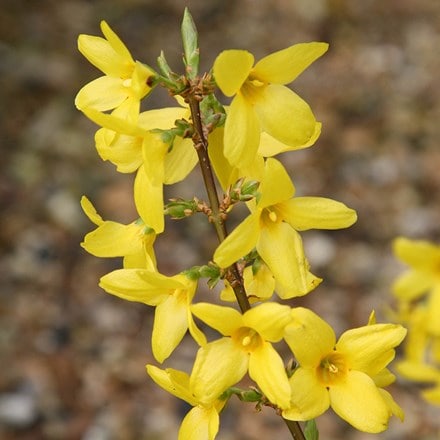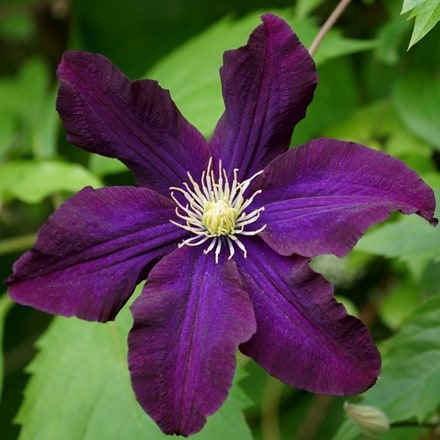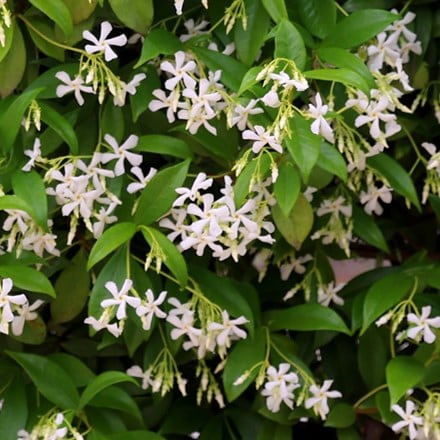May in the garden

Written by: Ashley Edwards
May is an exciting time of year, the transition into summer begins. Early flowering shrubs and bulbs fade whilst the trees are clothed in fresh green leaves and herbaceous plants take the baton and run with it.
In the garden the work that you put in now will pay dividends come summertime.
Plant care
What to do with spring bulbs
Resist the urge to cut or tie the dying foliage until the leaves are completely brown. This will ensure that the bulb has stored up all its energy for next year's flowering display. Do deadhead though, as you don't want the plant spending energy on producing seeds. If you need to dig up and divide clumps, you can still do this in the early part of the month, but you should water and mulch after replanting.


Pruning Early Flowering Shrubs
Shrubs like viburnum and forsythia flower on last year's growth, so need to be pruned after flowering has ended to allow them enough time to produce growth for next year's display.
For evergreen viburnum like Viburnum tinus you can take off around a third of the growth all over to keep the plant bushy. Remove any crossing, dead or diseased growth. Birds may be nesting in your Viburnum, so be aware of this and delay pruning if necessary.
Now is a good time to check for viburnum beetles whose larvae do the most damage in late spring. They appear as small green larvae with black markings and the symptoms include leaves with lace like appearance from being eaten, and an unpleasant odour from the shrub. Pick them off by hand where possible and encourage birds into your garden who will eat the larvae. Unless infestations are severe, the damage is generally only cosmetic and the viburnum will recover by summer. On badly infested shrubs, I have cut them down to the ground in early spring which produces a flush of healthy new growth and removes the overwintering eggs.
For Forsythia, you can remove any crowded growth from the centre of the plant along with anything that is crossing, dead or diseased. You can do a light rejuvenating prune by taking out a fifth of the oldest stems, if you need to do severe pruning wait until the shrub is dormant in late autumn or early spring, this will mean losing a season's flowers.
Heavenly hellebores
Staking and Tying in Plants
Many summer flowering perennials will need extra help when it comes to support. Peonies, delphiniums, lupins and other top heavy plants can snap under high winds or spring showers, so use a growing frame, canes or weave your own hazel or willow support from foraged materials. When tying in plants use twine or soft string to prevent cutting into and potentially damaging stems.
Climbers such as clematis, honeysuckles and jasmine will be putting out new shoots that need to be tied into wigwams or trellis. There are many types of frame, ranging from metal obelisks to bamboo canes and you can also use foraged hazel or willow. Tying in now will allow the plants to create a solid framework for summer and an abundance of flowers. Climbing roses can be tied in later in the summer when stems begin to thicken.
Monitoring Insects
The majority of insects that visit our garden are beneficial. Even so called ‘pests’ are an important part of the food chain, without them we wouldn't have birds, bats, hedgehogs, frogs, toads and other creatures we enjoy seeing in our gardens.
Problems only occur when there is an imbalance in populations of critters like aphids, slugs, snails, vine weevils, that then subsequently feed on plants and cause significant damage.
By encouraging beneficial insects you can keep pest damage at a minimum, but it is important to tolerate a small population of these plant eating insects.
There are natural and cultural methods you can try to help slow down the damage caused. Watering in the morning rather than evening makes the garden less attractive to nocturnal slugs and snails. You can catch slugs and snails in the evenings and transport them to a wild space, far from your garden (don't be tempted to throw them over the neighbours fence as they'll only find their way back).
Leave small patches of wild areas in your garden to encourage natural predators and if you can add a pond (even a small tub in the ground with some plants) you'll encourage frogs, toads and other wildlife who love to feed on slugs and snails.
When growing vegetable plants, I find it best to grow seedlings indoors until they are robust enough to go outside in the veg patch. You can use other physical barriers like netting and fleece to protect against cabbage whites and cloches to protect against slugs and pigeons. Some people swear by egg shells, there's no harm in trying, but slugs have an amazing protective slime that allows them to slither across most surfaces. Hair or wool (pet or otherwise) can be a decent deterrent as it sticks to slugs. If you have a severe infestation, consider nematodes which are microscopic worms that feed on slugs and snails. They are specific to their host but there are plenty of predatory slugs (like the leopard slug) that eat other slugs and these would also be killed by nematodes.
The best defence against pests, is a healthy garden. Garden organically, in a way that considers the fine balance of nature, and you'll create a haven for all varieties of insects, the good, the bad and the ugly. The chain of life will keep itself in check.
Planting for pest control
Companion Planting
Planting open flowers like calendula, achillea, campanula and cosmos will attract lacewings and hover flies whose larvae can eat an impressive 600 -1000 aphids, respectively, in their lifetime. When choosing companion plants, avoid double flowers that are inaccessible to the adult insects who feed on pollen and nectar. Long season flowering plants are perfect, and half hardy annuals can be sown directly into veg and flower beds to fill gaps.
Ladybirds also love snacking on aphids and can eat up to 5000 in their lifetime. Encourage them by providing winter cover for them to hibernate. Leaving dead herbaceous material and a log pile is good habitat, you'll often find ladybirds hibernating in leaf piles too. Nettles are one of their favourite plants to lay eggs on, so if you can give a patch of your garden over to nettles, it’ll pay you back ten fold in aphid chomping ladybirds.
Scented companion planting
Mixing your veg bed with scented plants is a great way to confuse insects. Try planting onions and garlic amongst carrots to deter carrot root fly. French Marigolds with tomatoes is a traditional way to keep whiteflies away and they also suppress plant-parasitic nematodes.
Strongly scented herbs contain oils that are used by the plant as a natural insect repellent. Lavender is said to deter black fly and other pests and makes a great companion plant for roses. Sage can also help confuse blackfly and aphids, chives and thyme too. These methods have been used for centuries, so why not experiment in your own garden with mixing scented plants in your borders and veg garden.
Sacrificial planting
Nasturtiums are a favourite of black fly and cabbage white caterpillars. Plant them as a sacrificial plant near your prized veg. They’ll also attract the beneficial insects that will come to feed on the endless buffet of pests. Nasturtiums are surprisingly tough and they will bounce back from an infestation, providing edible flowers and peppery leaves for salad.
Chervil is a herb that adds an anise flavour to dishes, and is also loved by slugs. It grows quickly and can be sown successionally to act as a magnet for slugs which can then be picked off easily.
Grow extra crops. If you have the room, grow more than you need as inevitably some will be damaged or eaten. This will hopefully ensure that there is still plenty for you to harvest for the dinner table.













